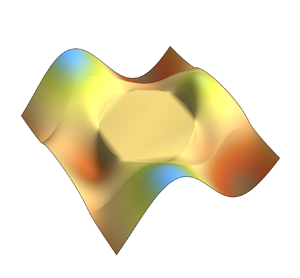Article contents
Upscaled dynamic capillary pressure for two-phase flow in porous media
Published online by Cambridge University Press: 17 March 2023
Abstract

A closed expression for the average pressure difference (often called the macroscopic dynamic capillary pressure in the literature) is proposed for two-phase, Newtonian, incompressible, isothermal and creeping flow in homogeneous porous media. This upscaled equation complements the average equations for mass and momentum transport derived in a previous article. Consistently with this work, the expression is derived employing a simplified version of the volume-averaging method that makes use of elements of the adjoint method and Green's formula. The resulting equation for the average pressure difference is novel, as it shows that this quantity is controlled by the pressure gradient (and body forces) in each phase, as well as interfacial effects, and is applicable to situations in which the fluid–fluid interface is not necessarily at its steady position. The effective-medium quantities associated with the sources are all obtained from the solution of a single adjoint (or closure) problem to be solved on a (periodic) unit cell representative of the process. The average pressure difference predicted by the derived expression is validated through excellent comparisons with direct numerical simulations performed in a model porous structure.
- Type
- JFM Rapids
- Information
- Copyright
- © The Author(s), 2023. Published by Cambridge University Press
References
REFERENCES
- 4
- Cited by



